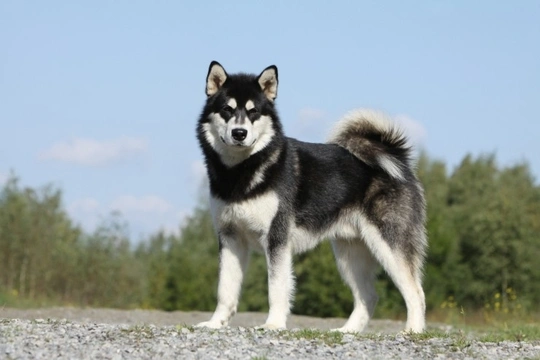Pets
Pets for studWanted petsBreedersAccessories & services
Knowledge hub
Support
Support & safety portal
Alaskan Malamute Polyneuropathy (AMPN) testing and heredity
Alaskan malamute polyneuropathy (AMPN for short) is a hereditary health condition that affects the Alaskan malamute dog breed, and which can be transferred from dog to dog via their breed line from their parents and ancestors.
The condition is a neuromuscular disorder, which leads to progressive muscle atrophy and abnormalities of the hind legs that lead to an unusual walking gait. The condition usually becomes apparent in younger dogs aged anywhere from three months to two years of age, and may first present as problems walking up and down steps and inclines.
Because Alaskan malamute polyneuropathy is a hereditary condition, it cannot be caught or transferred from dog to dog other than by means of heredity via the breed line, which can be tested for by means of DNA testing before breeding. Pre-breeding screening is important, in order to allow potential breeders to make an informed decision about the viability of any particular breed match prior to going ahead.
In this article, we will look at Alaskan malamute polyneuropathy in more detail, including how the heredity of the condition works, and how to get your own dog tested. Read on to learn more.
More about Alaskan malamute polyneuropathy
Alaskan malamute polyneuropathy is also sometimes known as idiopathic polyneuropathy, and leads to a lack of nerve supply to the peripheric nervous system, which in turn causes the dog’s muscles to gradually degrade due to nerve degeneration.
Generally, the condition becomes apparent in affected dogs before they reach the age of two, and worsen progressive loss of muscle reflex and control, ataxia, and a strange gait in the back limbs. This affects the way the dog can walk and move around, which may be visible as a strange gait, appearing to walk on the top of the feet, and general lack of coordination and swaying or falling down regularly.
What sort of dogs can be affected by the condition?
As the name indicates, Alaskan malamute polyneuropathy affects dogs of the Alaskan malamute breed exclusively, but it can of course always affect cross breeds and hybrid breeds that have partial Alaskan malamute ancestry. A similar mutation is known to occur in the Greyhound dog breed too, but this is caused by a different gene mutation and so, is tested for and diagnosed separately.
The condition usually becomes apparent in younger dogs, under the age of two.
How does the heredity of the condition work?
Alaskan malamute polyneuropathy is an autosomal recessive hereditary condition, which means that for a dog to be affected by the condition, they have to inherit the right combination of gene mutations from both of their parent dogs to develop the active form of the condition.
Alaskan malamutes are assigned one of three statuses after testing: clear, carrier or affected. Only dogs with affected status will suffer with the condition themselves, but carriers can still pass the condition on to their offspring, even if they are not ill themselves.
A short outline of the heredity of the condition is as follows:
- Two clear parent dogs will produce all clear litters.
- Two affected parent dogs will produce affected litters.
- Two carrier dogs will produce a statistical mix in their offspring: 50% carrier, 25% clear, and 25% affected.
- A clear dog and a carrier will produce a litter of 50% carriers and 50% clear.
- A clear dog and an affected dog will produce a litter of carriers.
- A carrier and an affected dog will produce a litter of 50% carriers and 50% affected dogs.
How to get your dog tested
If you own an Alaskan malamute and wish to use them for breeding, it is important to find out their status first, so that you can make an informed decision about whether or not to breed, and what dog to match them to.
Once tested, dogs are given a result of either clear, carrier or affected, and as outlined above, picking the right status match for the parent dogs ensures the status of the puppies. While two clear dogs is obviously the optimum match for heathy offspring, breeding only clear dogs from the limited gene pool of one distinct breed can lead to an increase in the odds of introducing other mutations and conditions into the gene pool, because the gene pool for pedigree dog breeds is necessarily small, in order to maintain the integrity of the breed.
A simple DNA test is all that is needed to return a result on your dog’s status, and in order to do this, you will need to ask your vet to take a blood sample or buccal swab from your dog, and then arrange to send it off to one of The Kennel Club’s approved laboratories.
The results will then be returned to you, allowing you to understand your own dog’s status and so, viability of being good breeding stock.



